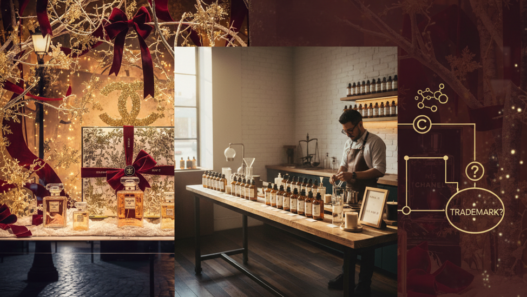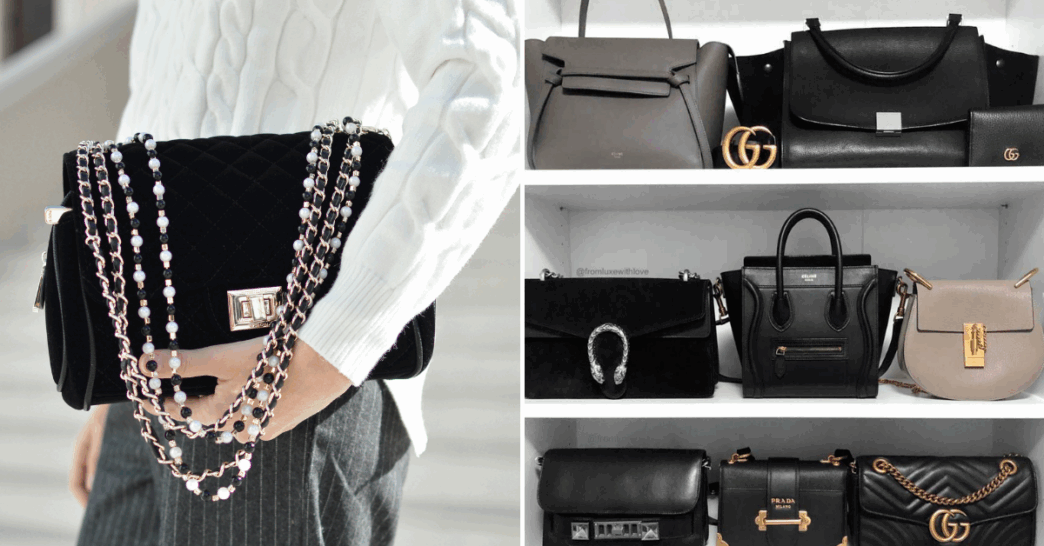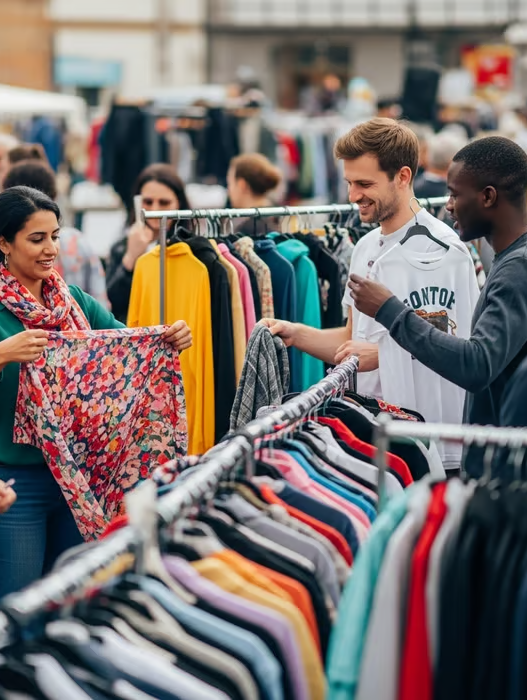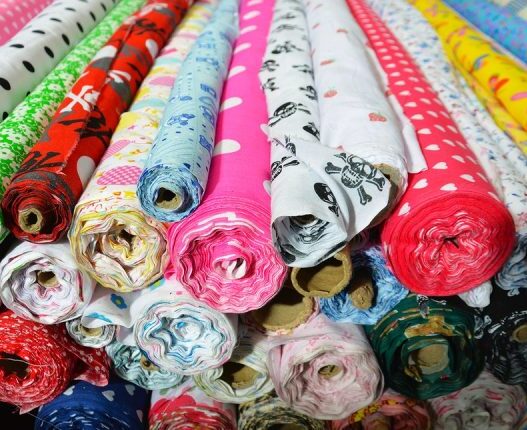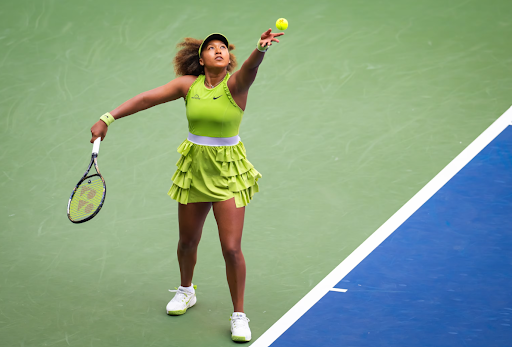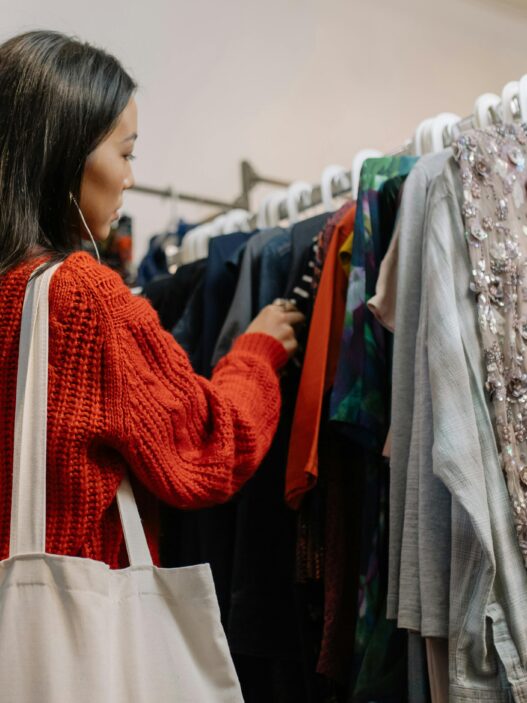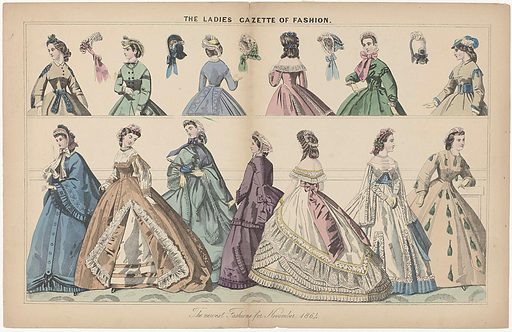As Coco Chanel rightly quoted, “Fashion is not something that exists in dresses only. Fashion is in the sky, in the street, fashion has to do with ideas, the way we live, what is happening.”
Fashion has always been a utilitarian concept, evergreen and ever-evolving. It’s one of the ways to express ideas, art, and emotions. Within the Indian context, as fashion takes a front seat in the ordinary person’s lifestyle choices, we see a significant shift in the perception of luxury brands in the country. The concept of ‘brand value’ is gaining popularity as everyone seeks to acquire the latest high-fashion luxury products. While this rise in fashion awareness boosts the economy, caters to a higher standard of living for all, and breaks down the class divide, it also comes with new challenges. The emergence of dupes and counterfeits has closely paralleled the growing popularity of luxury fashion brands, and this has a direct impact on the trademarks and service marks of these brands. Dupes are replicas of high-end fashion products, not claiming to be identical to their expensive originals, but rather offering cheaper alternatives to original luxury products. Counterfeits, on the other hand, can be defined as illegal products falsely claiming to be something they’re not, mimicking their original counterparts and selling them as the same. One may easily confuse the two; hence, this paper first clarifies the difference between dupes and counterfeit products, moving on to examine the legal positions of both and determine whether they constitute trademark infringement or not. The paper further explores how dupes can be used to enhance a brand’s image while also tarnishing it in the context of Trademark Law, and whether they should be given legal recognition. Lastly, the paper explores the intersection of fashion law as a distinct discipline and its growing relevance in shaping Intellectual Property Rights in the modern era.
Review of Literature
- Poorvi Singh Chaudhary & Udiksha Chhikara, Role of Intellectual Property Law in the Fashion Industry, 3 INDIAN J.L. & LEGAL RSCH. 1 (December 2021 – January 2022).
This paper examines the pivotal role of Intellectual Property (IP) in the fashion industry, highlighting its importance in protecting creativity and innovation. It examines patents, copyrights, and trademarks, detailing their application to fashion design and branding. The study also analyses legal frameworks, enforcement mechanisms, and key national and international judgments, highlighting how designers can safeguard their work and navigate the evolving intersection of fashion and intellectual property law.
- Mark K. Brewer, Fashion Law: More than Wigs, Gowns, and Intellectual Property, 54 SAN DIEGO L. REV. 739 (November-December 2017).
This article examines the expanding field of fashion law, highlighting its evolution beyond intellectual property (IP) to encompass human rights, labour conditions, business practices, and environmental sustainability. It examines deficiencies in IP law, the societal impact of fashion, and legal gaps in labour and sustainability. By framing fashion law from an international perspective, the article underscores its growing relevance and calls for further academic, legislative, and judicial engagement.
- Ann Bartow, Counterfeits, Copying and Class, 48 HOUS. L. REV. 707 (2011).
This analysis argues for a clear distinction in trademark law between illegal counterfeits and legal knockoffs, which replicate aesthetic features without infringing trademarks. It contends that aesthetic design elements should not receive trademark protection, as this could lead to monopolisation. The paper highlights that non-counterfeit knockoffs foster legitimate market competition, and restricting them unfairly limits consumer access while potentially driving demand for counterfeit goods.
- Mishra, Anunay & Amala Siby, The Impact of Replicas and First-Copy Products on Authentic Products: An Exploration in the Apparel Industry, Student, School of Commerce Finance & Accountancy, Christ (Deemed to be University), Delhi NCR, India; Assistant Professor, School of Commerce Finance & Accountancy, Christ (Deemed to be University), Delhi NCR, India* (Year of Publication).
This study examines the impact of replicas and first-copy products on authentic apparel brands, focusing on trademark concerns, consumer behaviour, and ethical implications. While replicas undermine brand identity, intellectual property rights, and revenues, some argue they generate interest in luxury brands. Ethical concerns such as exploitative labour and environmental harm are also explored. The research aims to provide stakeholders with insights into mitigating the adverse effects of counterfeit fashion.
- Miranda Nolan, ‘Prada Bag or Fraud-A Bag: The Impacts of Knockoffs and Counterfeits on the Fashion Industry’ (2023) 68 St Louis U LJ 215
Fashion straddles the line between utilitarianism and creativity, creating legal ambiguity. Intellectual property can safeguard certain parts of fashion. As an example, Trademark law can protect the logo of a bag. Fashion does not fall under intellectual property protection laws in the US, allowing for legal knockoffs. This note analyses the existing intellectual property protections. This paper examines the impact of knockoffs on the fashion industry and the harm caused by counterfeits. It provides an outline of intellectual property protection in the US and its application to many aspects of fashion design.
- Florencia Reagan, Keeya Averielle Tejasukmana, Matthew Toby, ‘The Fine Line Between Inspiration and Imitation: Delving into The Intersection of Fashion Dupes, Law and Society’ [2025] 3 1 Anthology: Inside Intellectual Property Rights This paper talks about the rising trend of fashion dupes driven by social media, especially platforms like TikTok, and its impact on social behaviour, the economy, and Intellectual Property Rights, particularly trademarks. It examines how dupe culture affects consumer behaviour, environmental sustainability, and labour practices, while also creating legal uncertainty. Using a normative, historical, and comparative legal approach, the paper highlights how different jurisdictions address the challenges posed by fashion dupes.
Methodology
The research paper will utilise a normative approach, incorporating statutory and case analysis. Normative research is a qualitative research method that involves examining existing laws, regulations, and policies to assess their impact on social and legal issues. This writing employs a statutory, historical, and comparative approach.
Introduction
“You go to your closet and you select out, oh, I don’t know, that lumpy blue sweater for instance, because you are trying to tell the world that you take yourself too seriously to care about what you put on your back. But what you don’t know is that that sweater is not just blue, it’s not turquoise, it’s not lapis, it’s cerulean. You’re also unaware that in 2002, Oscar de la Renta created a collection of cerulean gowns. And then I think it was Yves St. Laurent, wasn’t it, who showed cerulean military jackets? And then cerulean quickly showed up in the collections of eight different designers. Then it filtered down through the department stores and then trickled on down into some tragic Casual Corner where you, no doubt, fished it out of some clearance bin. However, that blue represents millions of dollars and countless jobs. So it’s sort of comical how you think that you’ve made a choice that exempts you from the fashion industry when, in fact, you’re wearing the sweater that was selected for you by the people in this room.”[1]
The above excerpt is from the fashion icon movie, “The Devil Wears Prada”. It is a scene between Miranda Priestly (played by actress Meryl Streep), a fashion icon and editor of the fictitious fashion magazine Runway, and her intern, Andrea Sachs (played by actress Anne Hathaway), as they discuss the impact one luxury brand has on fashion, subsequently manipulating the economy and culture. The reference mentioned above clearly states that the fashion industry creates trends based on economic, political, climate, and even pandemic-related considerations, such as the COVID-19 pandemic.[2] This scene of the ‘cerulean sweater’ clearly tells us that trends are not only beginning with musings or designers, but they also replicate through copying and referencing. One designer brand copying another, as it has become the ‘colour of the season.’ When the same concept is found in department stores, it becomes too redundant and no longer desirable, hence it is often found in a ‘clearance bin’. Designers referencing and reproducing their work have created what one would call the ‘copycat culture,’ which measures the success of this industry. People want what is popular, relevant, and available from prominent designers, hence the proliferation of this culture. This doesn’t align with the fact that fashion has long been a vehicle for expressing artistic ideas, emotions, and self-expression[3], which makes it a creative field for designers.
Fashion design is an art that generates products we use daily and are considered essential in common knowledge. It’s conventional for us to believe that science, technology, art, literature, and music are among the first sectors that spring to mind when we think of new inventions, ideas, and expression. Fashion is a less conventional, but equally important, option.[4] A designer needs a creative and artistic personality to create such art. Intellectual Property (IP), as we all know, is a result of something developed through one’s intellect, something novel, an invention. As defined by the World Intellectual Property Organisation (WIPO), Intellectual property (IP) refers to creations of the mind, such as inventions, literary and artistic works, designs, symbols, names, and images used in commerce.[5] Intellectual property (IP) originates from the use of creativity and intellect to create something original, innovative, or distinctive. In the fashion industry, the most significant asset is this intellectual capital combined with a strong, unique brand identity. Various designers can easily steal this brand identity by copying their creations. A brand is directly associated and recognised through its trademark. A trademark is a sign capable of distinguishing the goods or services of one enterprise from those of other enterprises.[6] Since IP regulations are often procedural and time-consuming, many brands do not register their creations, making copying easier. As soon as designers unveil their shows, it doesn’t even take a week for fashion enterprises to replicate them, a trend now known as ‘fast fashion’. Fast fashion is defined as inexpensive, trendy clothing that draws inspiration from the fashion show catwalk or celebrity culture and transforms it into garments sold in everyday stores at a rapid pace to meet consumer demand.[7] Recently, the time between the designer’s initial creation and the production of copied knockoffs has significantly decreased. For example, a Bottega Veneta Mini Jodie bag is sold on their website for $2,650 (approximately Rs 226224.45). Still, a knockoff can be found on Amazon for under twenty dollars (approximately Rs 1,707.35) with free expedited shipping.[8] Not everyone will be able to afford the original product of a luxury brand; only those who prefer status and authenticity will opt for it. Hence, fast fashion is emerging rapidly amongst the youth. A knockoff, also known as a dupe, is a concept developed to avoid the explicit copying of distinctive logos, trademarks, or patented designs from the original product. Dupes often take inspiration from popular designs, and while they aim to replicate the style and feel of the original product closely, they don’t claim to be the original.[9] Copying of products is not only limited to creating knockoffs, but also extends to imminent copying and creating goods that are sold as originals (counterfeits), which constitutes a direct infringement of the designer’s IP. How does one address this confusion among consumers?
This paper, in Part II, aims to clarify the confusion between the concepts of duplicates and counterfeits, further explaining the legal implications of both through various case laws discussed in Part III. Part IV provides a detailed comparative study on how dupe culture in South Asian countries impacts luxury brands based in Europe. Part V concludes that knockoffs and duplicates are directly related to societal mentalities and lifestyles’ progress, thus benefiting the broader fashion industry, while counterfeit products not only disrupt the fashion market but also devalue original designer work.
Dupes V Counterfeits
Luxury brands constantly grapple with the challenge of combating lookalikes and knockoffs — a concern that eventually touches nearly every product and brand. The major difference between dupes and counterfeits lies in the legality of their commercialisation and the level of imitation.
What are Dupes?
The easiest way to understand the concept of dupe can be through ‘Wirkin’, an almost identical version of the infamous ‘Birkin’ bag by Hermès, a French luxury brand established in 1837.
In the above pictures, as we can see, the right-hand side picture is of a ‘Wirkin’, which is considered a dupe for the wirkin class, has garnered media headlines across the globe and sparked debate on the ethics and legality of copycats and the dupe economy. The Wirkin has hit a nerve, highlighting the rise of dupe culture and a shift in consumer mindset around luxury goods.[10] While the left-hand side picture is of a 129,000 USD Crocodile Skin Hermes Birkin Bag made by Hermès, it is the world’s most desirable luxury item. It is easy to differentiate between them, right from the quality of both the products to the process of making them. Wirkin’s look very factory-made with less attention to detail, while its original boasts of quality and painstaking manufacturing process, it is hand-sewn and very rare, hence the exorbitant pricing. One can easily differentiate between the two, with clearly no confusion as to which one is the original. Be it the price, which would make more sense as one belongs to the Walmart bag section, while the other is in the holy Hermès store. Hence, dupes can be defined as the short term of “Duplicates”, meaning a mimic of companies’ high-end or popular brands, without trying to deceive the consumer into thinking it is the real deal.[11] Even though dupes, which are also called knockoffs, carry a lesser negative connotation, it’s still a very broad concept that has not yet exhausted itself. We can see this from some of the companies making products which have extreme resemblance to the original, getting as close as they can without infringing any IP. This is called “risky dupes and the Australian cosmetic company MCoBeauty is one of the examples. It publicly pushes legal boundaries to duplicate trending, high-end cosmetics and sells them to the major retail market at a much lower price.[12]
Historically, luxury items were only accessible to the wealthy upper-class individuals when the class divide was significant. Extravagant furniture, items of opulence, represented their status in society. While these items were worthy to have, not everyone could afford them; hence, certain craftsmen learnt the skills to duplicate such products with the same level of precision and detail as the original creators. Even today, dupes represent “ We want what we can’t have”, only being hyped up by social media such as TikTok, Instagram, Amazon, AliExpress, Shopee and other E-Commerce. The prevalence and acceptance of dupe goods have evolved with increasing living cost pressures and a generational shift in consumption of goods and media normalised by Gen Z and lower-income groups.[13] Many fashion and beauty influencers have contributed to such promotion by incorporating affordable alternatives in their content, presenting dupes as stylish and practical.[14] Knockoffs, although often cheaper than the original in price and construction, have afforded a greater variety of styles for virtually everyone.[15]
What are Counterfeits?
Counterfeits, in contrast to dupes, are deliberately deceptive imitations of authentic goods. Counterfeit products use trademarks, logos, and branding to mislead consumers into thinking they are purchasing the real thing (or to offer a cheap replica!). Counterfeit goods are a direct infringement of intellectual property rights and are often sold at a fraction of the price of genuine products, making them incredibly popular for a lot of consumers.[16] Unlike dupes, counterfeits violate trademark laws and pose serious risks to consumers, such as inferior quality, safety issues, and the absence of warranties or customer support. As we already know about the nexus between luxury brands and societal status, those who could not afford such luxury further went on to develop another market of copied goods – the counterfeit market. This direct relation of status and nexus had led to rampant growth in demand for counterfeit items. In the present age, the internet has facilitated the growth of the counterfeit market, combining the appeal of cheap imitation luxury goods with the simplicity of online shopping, especially with avenues like Amazon and eBay.[17]
One of the major examples can be of various sites claiming original branded products at a very cheap price. It is astonishing that these products resemble the original product to the T, with no details missed! People often purchase these in hopes of being accepted as ‘high-status’ in society. Although it is a well-known fact that counterfeit goods are usually of lower quality than genuine products, some consumers may disregard quality concerns in order to own a replica of a famous designer item, sometimes even believing it to be authentic. Such creators are not only infringing on the rights of the designers but also deceiving the public at large. Exclusivity through brand recognition is something very crucial to a luxury brand. If the brand is available so widely, irrespective of the originality, the brand can cease to be exclusive, leading to a decline in the market for it.
Legal Position of Dupes and Counterfeits
Dupes and their impact
Globally, dupes are considered legal as they do not cause any direct infringement to any IP rights of the designer, mainly as they do not claim to be ‘original’, hence deleting the possibility of passing off. People are aware that they are buying a different product than the original, which just imitates the same design but is not the same. We have seen popular brands like Zara skilfully market most of their products as dupes of high-end luxury products. Walking into a Zara store feels like looking at Chanel, Gucci, Hermes, Dior, etc, all in one place at affordable prices. They sell strikingly similar products to these brands, especially footwear and handbags, at a reasonable price, which are considered the most expensive luxury items. Not only is Zara now considered a ‘Luxury that everyone can afford’, which clearly explains how dupe culture, along with the concept of fast fashion, has led to the upliftment of brands that fill the medium void amongst people.
Hence, to summarise it, dupes are legal in nature and do not cause any Trademark infringement :
- They do not claim to be the original product; in fact, they are even advertised as non-original products, duplicates of the originals. They sell their own brand as an affordable option in comparison to their original counterparts.
- There is no infringement in the sense that no copying of the Trademark or the trade dress of the original.
Even though dupes seem to be harmless to a brand’s reputation, the ambiguity around their ambit is still a grey area and difficult to exhaust. The legal implications are not enough to evaluate the impact of dupes in the fashion economy; there are various other factors that need to be involved to ascertain the impact of the same:
- Socio-moral scenario- When it comes to this perspective, the concept of ‘equality’ and ‘morality’ plays a strong role. Everyone in society should have access to things they desire for the ‘greater good’. We can also employ Jeremy Bentham’s theory of ‘maximising happiness’. Everyone desires a high status in society, and if one can get it through these materialistic purchases, then why not? Morality does not directly correlate to buying ‘fakes’ as dupes are also called; it has nothing to do with whether one is a good or a bad person. Buying an original luxury product is not affordable for the majority of people, and hence the dupe culture has significantly risen and is helping society by giving a liberty of choice to those who can only dream of it.
- The Gold Analogy- Gold is considered the most superior metal to make jewellery in the market, with prices soaring as high as the sky. It is considered a status symbol and hence popular amongst people. There is hence a whole imitation jewellery market, which essentially, could be called “dupes” of real gold jewellery. So the question that arises here is “ Does the existence of imitation jewellery in the market deplete the value of real gold jewellery? Does that lead to tarnishment or dilution?” No, it does not; in fact, one would even go on to say that it makes ‘gold’ more exclusive and unique, an altogether different entity in the market. This analogy can very well be applied to luxury goods as well. Just because there are dupes does not mean people forget the original; it is very much appreciated, in fact, considered exclusive in the brand market.
- Any publicity is good publicity: There is a brilliant scene in the Gucci movie where Lady Gaga’s character finds out people are selling fake Gucci bags, a nd she is outraged. When confronting the family members about it (presuming they will fight it with lawyers and put an end to it), they casually laugh it off and remind her that this isn’t problematic. There is an insinuation that this is a sign of their cultural significance. In other words, this could actually be a good thing, good for sales, good for business. [18] The character Aldo Gucci says: “They’re not fake, by the way. They’re replicas…..Quality is for the rich. If a Long Island housewife wants to live with the illusion that she’s a Gucci customer, why not let her?”[19] For instance, the ‘Walmart Birkin’ did not negatively impact Hermès’ sales; in fact, it enhanced the brand’s visibility and sparked widespread conversation. As noted in a recent press release, Hermès experienced a rise in sales during Q1 2025.
- Changing Trends: Luxury products often require maintenance and safekeeping, just like jewellery, which is also considered an investment in today’s time. One cannot use such products at all places, at all times; it is inconvenient, hence even those who can afford it choose dupes. The quality nowadays is not assured, as we always question the increasing prices. HarrietHadfield, in her article, quotes: “It’s funny how we build things up in our head.22-year-old me was ready to hand over $8,000 that day, and all she could think was I liked my $200 copy more!” [20]She attributes such mistrust to the growth of influencers and social media marketing, mistrust mainly in the origins of such products, the labour, the quality, etc. As the economy is shifting to ‘want-based’ consumerism, people have developed a taste for ‘dupe culture’ since it does the work for less than half the price of the authentic.
Having considered the above points, dupes do not solely look negative in terms of the IPR of luxury brands but do have certain unconventional impacts. As seen recently in a U.S. case, home goods giant Williams-Sonoma filed a lawsuit against Dupe.com. The company claims that Dupe.com is illegally copying the design and functionality of its products while exploiting the goodwill associated with the Williams-Sonoma brand. The case brings attention to the clash between the notion of “dupes” and intellectual property rights. Williams-Sonoma asserts that even though Dupe.com does not commit direct trademark infringement, its copying of distinctive designs and trade dress leads to unfair competition in the market. The lawsuit highlights that even without copying logos or trademarks, dupes can still infringe on broader intellectual property rights, particularly in relation to designs.[21]
Counterfeits and Their Impact
Counterfeit items pose a more direct and severe reputational and financial threat to luxury brands. The sale of a counterfeit over a genuine item represents revenue lost to the luxury brand. The quality of counterfeit items often falls short of the genuine article. Consumers who mistake them for the real thing may consequently view the brand as subpar[22]. It is an established fact that Counterfeit goods are considered illegal and their sale leads to direct infringement of Trademark rights of the designer, mainly due to the following arguments:
- Goods which are counterfeited come under ‘passing off’, which happens when someone deliberately or unintentionally passes off their goods or services as those belonging to another party. This action of misrepresentation often damages the goodwill of a person or business, causing financial or reputational damage.[23] Clearly, these products are being sold off as original, something that they are not, hence causing harm to the IP rights of the designer as well.
- Even when the purchaser is aware they are purchasing a counterfeit good, there is the likelihood of secondary confusion by others who see the purchaser wearing or carrying the counterfeit good.[24] This will lead the others to believe that the product is authentic, hence leading to damage to the brand’s reputation.
- The quality of such counterfeit products is evidently lower than the original product, due to the poor manufacturing processes and ill-fitted detailing, and if in this scenario such a product is sold as the original, leading the consumer to believe that the brand is selling such products it would make a case of brand dilution again diminishing the brand’s reputation.
In the case of Guccio Gucci SPA v. Intiyaz Sheikh[25], the Delhi District Court restrained a local manufacturer from using the brand’s iconic logo on its products. A suit was filed by the Plaintiff seeking to restrain the defendant from infringing its trademark and copyright with regard to socks of sub-standard quality being sold by them under the GUCCI branding.[26] Further, there was Adidas defending against Forever 21, wherein Adidas has wanted to protect its ‘three-stripe’ design under trademark since forever, which is evidenced by a series of lawsuits against Forever 21 starting in 2015 and another case in 2017 involving the fast fashion retailer and its suppliers for trade mark infringement.[27] The suit is still on. Gucci and Yves Saint Laurent filed a lawsuit against Alibaba Group Holding Ltd, accusing the Chinese online retail giant of trade mark infringement. The luxury brands allege that Alibaba has unlawfully facilitated the sale of counterfeit versions of their products on its online platforms.[28] In the recent case of Louis Vuitton Malletier vs. Abdulkhaliq Abdulkader Chamadia & Ors.[29],The Delhi High Court delivered a decision in the plaintiff’s favour, which was a big win in terms of its brand protection and identity. In June 2023, Louis Vuitton sued several defendants in Surat, Gujarat, for selling counterfeit goods, including shoes and accessories bearing the ‘LV’ trademark, through physical stores, online platforms, and social media. The Delhi High Court, after extensive evidence was submitted and the defendants failed to respond, granted an ex parte permanent injunction against them. Justice Amit Bansal emphasized the global reputation of the ‘LV’ mark and cited similar precedents. The Court also ordered the delivery of seized counterfeit products, blocked the involved websites, and awarded litigation costs. The ruling reinforces the importance of protecting well-known trademarks and calls for stricter IP enforcement measures. The ruling, albeit a victory for Louis Vuitton, has shown the collective effort needed to hold the grounds of a fair and reliable marketplace and provide a substantial role for intellectual property rights in modern-day commerce and trade.[30]
Global Implications of Dupes and Counterfeit Products
Europe has forever been the hub of Luxury brands. Brands like Dior, Chanel, Balenciaga, Louis Vuitton, Bottega Veneta, Gucci, Goyard, and so on have their origins in the European countries of France and Italy. It can be safe to say that luxury originates in Europe when it comes to the Fashion Industry. However, the rise in dupe culture has changed a lot of things for the fashion market. Most of these dupes and counterfeits come from the South-Asian markets, including countries like China, Indonesia, Vietnam, and Thailand. A survey, Ghost Data’s 2019 investigation on Instagram, revealed that China was the top origin country for counterfeit goods being sold on Instagram, with a 43% market share. Russia accounted for 30% of accounts, followed by Indonesia at 13%. The location of these counterfeit vendors is evidence of Instagram’s global reach and the extreme difficulty brands have in exerting control over the spread of counterfeits worldwide.[31] Based on the recent data published by the Indonesian Anti-Counterfeiting Society (IACS), Indonesia suffered a loss of 291 Trillion Rupiah in 2020 from duplicate goods alone.[32]
Conclusion
Gianni Versace once said, “Fashion goes with the feeling of the moment. It’s related to movies, to art, to young people’s taste.”
As the Fashion Industry revolutionises, the increased prevalence of dupes and counterfeits has significantly altered the dynamics of the global fashion markets, challenging both brand protection and consumer perception. This change in the industry brings new challenges for artistic freedom, protection of such creations, and their implications. Dupes generally operate within the legal framework by offering affordable alternatives without direct trademark infringement; counterfeits directly harm luxury brands through deception, brand dilution, and financial loss. This paper highlights that although dupes may, in some ways, democratize fashion and expand consumer access, in the case of Steve Madden, which is an example of a company dedicated to providing consumers with affordable knockoffs of designer shoes such as Valentino, Alexander McQueen, and Balenciaga. In essence, Steve Madden’s success is largely due to copying legally unprotectable design elements of luxury shoes, while maintaining its own brand name.[33] Imitating through knockoffs helps drive the fashion cycle by continually refreshing styles and trends, while occasionally drawing inspiration from past fashions.
Counterfeits, on the other hand, are unequivocally illegal and severely damage brand reputation and market trust. Besides causing visible harm to the brand’s reputation, this process has major implications, such as human trafficking and child labour. Over seventy per cent of the world’s counterfeit luxury apparel is made in China, where child labour primarily occurs. Children and adults are smuggled into other countries with the shipped counterfeits to work in sweatshops to finish the production of the fake luxury goods.[34] Therefore, considering the above reasons, the sale of counterfeit goods is punishable under federal civil and criminal laws. However, some supporters of counterfeits argue that luxury brands cannot produce lower-quality, more affordable versions of their products without compromising the exclusivity of their items and diminishing the brand’s prestigious image. This idea was disproven by the late Karl Lagerfeld, the former designer for Chanel, who produced reasonably priced lines with stores such as H&M and Macy’s without “cheapening” the prestigious brand of Chanel.[35]
Since the ideas and original designs of fashion designers are not highly protected by law, copying is inevitable in the current climate of law and fashion. Knockoffs are bound to occur with the natural progression of trends and the availability of fashion to larger populations. This is a sign of homage and praise to the good ideas of designers without attempting to pass as original work. Knockoffs promote innovation. However, counterfeits only hurt the fashion industry and negatively impact the work of fashion designers.[36]
Through judicial precedents and global trends, it becomes evident that luxury brands must adopt stronger surveillance, IP enforcement strategies, and public awareness campaigns. At the same time, policymakers must work toward stricter regulations and penalties to curb the spread of counterfeits. As fashion law evolves alongside social and technological trends, balancing innovation, accessibility, and brand integrity will be critical for the industry’s future.
[1] THE DEVIL WEARS PRADA (20th Century Fox 2006).
[2] How Do Fashion Trends Start, GLAM OBSERVER (Dec. 13, 2022), https://glamobserver.com/how-do-fashion-trends-start/ Accessed 25th April, 2025
[3] Poorvi Singh Chaudhary & Udiksha Chhikara, ‘Role of Intellectual Property Law in the Fashion Industry’ (2021) 3 Indian JL & Legal Rsch 1
[4] Kadian-Dodov, Binaka Gabriella, “Fashion Police: Intellectual Property in the Fashion Industry” Law Student Scholarship 252 (2013),
[5] WORLD INTELLECTUAL PROPERTY ORGANISATION, ‘What is Intellectual Property?’ https://www.wipo.int/en/web/about-ip Accessed 24 April 2025.
[6] WORLD INTELLECTUAL PROPERTY ORGANISATION, ‘Trademark’ < https://www.wipo.int/en/web/trademarks> Accessed 23 April 2025.
[7] Solene Rautrier, ‘What Is Fast Fashion and Why Is It So Bad?’ (good on you, 26 February 2025) < What Is Fast Fashion and Why Is It So Bad? – Good On You> Accessed on 23 April 2025.
[8] Mini Jodie, BOTTEGA VENETA,https://www.bottegaveneta.com/en-us/mini-jodie parakeet-809940571.html?gclid=CjwKCAiA5Y6eBhAbEiwA_2ZWIcvRDtHIU4EaeSP5Bo_Jk2 ZZtdciQLIHVmUzJSqB-8oB9nXZr3tBoRoC3hkQAvDBwE&gclsrc~aw.ds [https://penna.cc/U Y3V-28CF]; Woven Handbag for Women, Handbag Clutch Purse Soft Leather Mini Ladies Hobo Bag Zipper Closure, AMAZON,https://www.amazon.com/Handbag-Clutch-Leather-Ladies-Clo sure/dp/B0CLRP3FHZ/ref-sr_1_2?crid=FDFOPF8MUHQJ&keywords=Knot%2Bwoven%2B Bags&qid=1703089953&sprefix=knot%2Bwoven%2Bbags%2Caps%2C129&sr-8-2&th=1 [https://perma.cc/M946-R3 95].
[9] ‘Dupes V Counterfeit Products and the Impact on Luxury Brands’ (Croud, 20 May 2024) < https://croud.com/en-gb/resources/dupes-vs-counterfeit-products-and-the-impact-on-luxury-brands/> Accessed on 25 April 2025
[10] Elaine Maguire O’Connor, ‘The ‘Wirkin’ Birkin And The Rise of Dupe Culture’ (FASHION IS Psychology, 3 March 2025) https://fashionispsychology.com/the-wirkin-birkin-and-the-rise-of-dupe-culture/#:~:text=The%20dupe%2C%20nicknamed%20the%20’Wirkin,consumer%20mindset%20around%20luxury%20goods. Accessed on 23 April 2025
[11] Florencia Reagan, Keeya Averielle Tejasukmana, Matthew Toby, ‘The Fine Line Between Inspiration and Imitation: Delving into The Intersection of Fashion Dupes, Law and Society’ [2025] 3 AIIPR 1
[12] Alexandra J Roberts, ‘Dupes’ (November 2023) NYU Journal of Intellectual Property & Entertainment Law 4 https://papers.ssrn.com/sol3/papers.cfm?abstract_id=4933766 Accessed on 21 April 2025
[13] Florencia Reagan, Keeya Averielle Tejasukmana, Matthew Toby, ‘The Fine Line Between Inspiration and Imitation: Delving into The Intersection of Fashion Dupes, Law and Society’ [2025] 3 AIIPR 1
[14] Nur Yasmin, ‘Indonesian Consumers Prefer Socially Conscious Brands: Study’ (B Network, 25 June 2020) < Indonesian Consumers Prefer Socially Conscious Brands: Study> Accessed on 23 April 2025
[15] Miranda Nolan, ‘Prada Bag or Fraud-A Bag: The Impacts of Knockoffs and Counterfeits on the Fashion Industry’ (2023) 68 St Louis U LJ 215
[16] ‘The difference between dupes and counterfeits: What consumers and IP Rights owners need to know’ (Kilburn&Strode, 29 November 2024) < https://www.kilburnstrode.com/knowledge/european-ip/the-difference-between-dupes-and-counterfeits> Accessed on 23 April 2025
[17] Tripoli, supra note 77, at 876-77.
[18] Fake Fendi and dupe culture (Harriet Hadfield, 21 May 2025) https://harriethadfield.substack.com/p/fake-fendi-and-dupe-culture Accessed on 25 June 2025
[19] HOUSE OF GUCCI (Bron Studios, Scott Free Productions, Metro-Goldwyn-Mayer, 2021.)
[20] Fake Fendi and dupe culture (Harriet Hadfield, 21 May 2025) https://harriethadfield.substack.com/p/fake-fendi-and-dupe-culture Accessed on 25 June 2025
[21] The difference between dupes and counterfeits: What consumers and IP Rights owners need to know’ (Kilburn&Strode, 29 November 2024) < https://www.kilburnstrode.com/knowledge/european-ip/the-difference-between-dupes-and-counterfeits> Accessed on 23 April 2025
[22] ‘Dupes V Counterfeit Products and the Impact on Luxury Brands’ (Croud, 20 May 2024) < https://croud.com/en-gb/resources/dupes-vs-counterfeit-products-and-the-impact-on-luxury-brands/> Accessed on 25 April 2025
[23] ‘Trademarks’ (NI BUSINESS INFO.CO.UK) < https://www.nibusinessinfo.co.uk/content/passing-definition-remedies-and-defences#:~:text=What%20is%20passing%20off%3F,causing%20financial%20or%20reputational%20damage.> Accessed on 25 April 2023
[24] Kurt M Saunders and Gerlinde Berger-Walliser, ‘The Liability of Online Markets for Counterfeit Goods: A Comparative Analysis of Secondary Trademark Infringement in the United States and Europe’ (2011) 32 Northwestern Journal of International Law and Business 37
[25] Guccio Gucci SPA v Intiyaz Sheikh (2012) CS(OS) No 2467/2010 (Delhi High Court)
[26] Rima Majumdar and Priya Adlakha, ‘Counterfeiting in the Fashion Industry- India’ (Lexology, 6 September 2022) < https://www.lexology.com/library/detail.aspx?g=84a8b542-3028-4f03-afc1-1596c8eef926> Accessed on 23 April 2025
[27] ‘5 famous cases of counterfeiting’ (abion, 9 April 2024) < https://abion.com/5-famous-cases-of-counterfeiting/> Accessed on 22 April 2025
[28] Id.
[29] Louis Vuitton Malletier v Abdulkhaliq Abdulkader Chamadia and Others (2018) CS (COMM) No 714/2016 (Delhi High Court)
[30] Naik Naik & Company, ‘Louis Vuitton’s Triumph: A Landmark Delhi HC Ruling Against Trademark Infringement’ (Mondaq, 30 December 2024) < https://www.mondaq.com/india/trademark/1562676/louis-vuittons-triumph-a-landmark-delhi-hc-ruling-against-trademark-infringement> Accessed on 22 April 2025
[31] ‘Dupes V Counterfeit Products and the Impact on Luxury Brands’ (Croud, 20 May 2024) < https://croud.com/en-gb/resources/dupes-vs-counterfeit-products-and-the-impact-on-luxury-brands/> Accessed on 25 April 2025
[32] Florencia Reagan, Keeya Averielle Tejasukmana, Matthew Toby, ‘The Fine Line Between Inspiration and Imitation: Delving into The Intersection of Fashion Dupes, Law and Society’ [2025] 3 1 Anthology: Inside Intellectual Property Rights
[33] Tariro Mzezewa, ‘An It Bag Faces Its Imitators’ (New York Times , 21 March 2018) https://www.nytimes.com/2018/03/21/fashion/steve-madden-cult-gaia-handbag-lawsuit.html Accessed on 26 April 2025
[34] THOMAS, supra note 198, at 278, 285.
[35] Lynn Yaeger, ‘Chanel, H&M, Macy’s, Diet Coke: What Should Karl Lagerfeld Design Next?’ (Vogue ,4 August 2011) http://www.vogue.com/vogue-daily/article/chanel-hm-macys-dietcoke-whatshould-karl-lagerfeld-design-next/#1 Accessed on 23 April 2025
[36] Miranda Nolan, ‘Prada Bag or Fraud-A Bag: The Impacts of Knockoffs and Counterfeits on the Fashion Industry’ (2023) 68 St Louis U LJ 215



